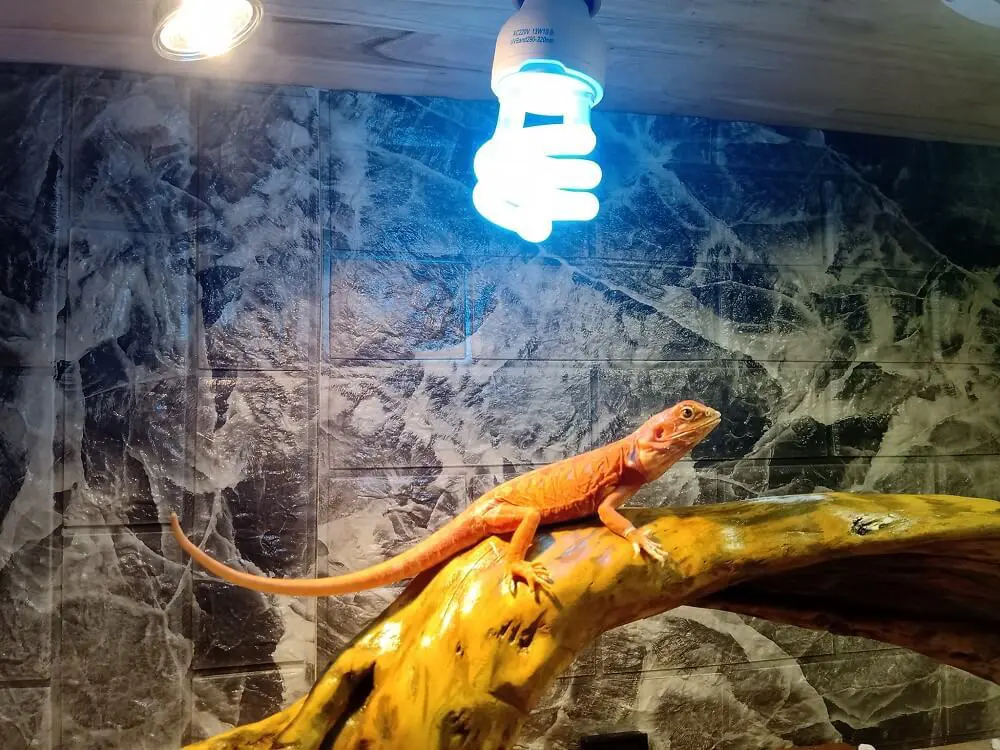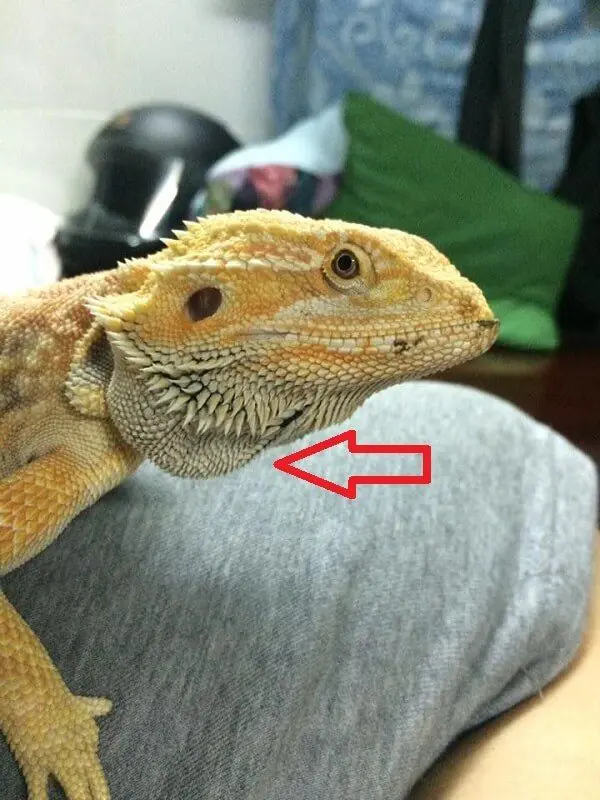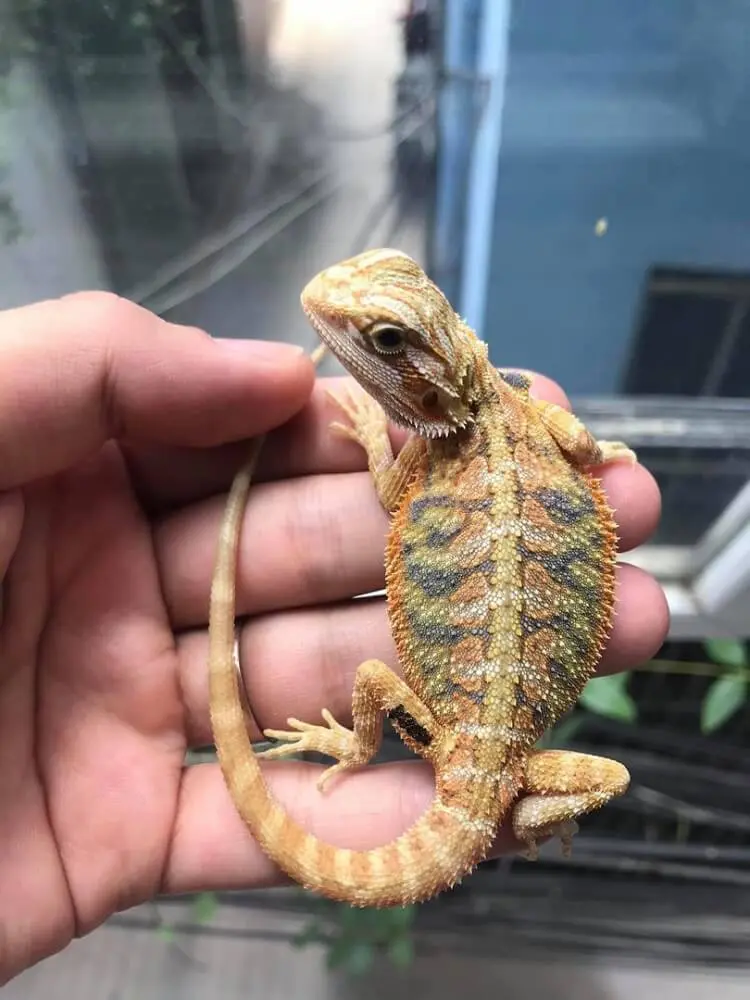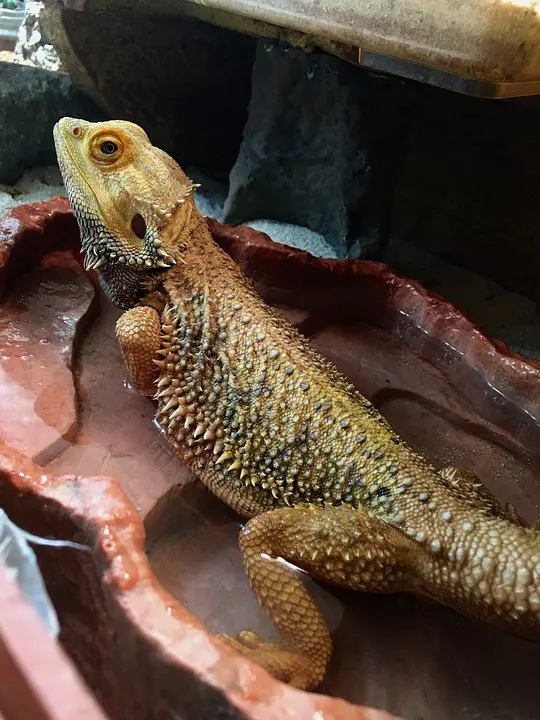It’s important to get to know your bearded dragon, so you can identify when something isn’t right.
Regular handling, monitoring, and knowing your bearded dragon’s behavior and character, can quickly help you notice when something is wrong, such as a lump.
Lumps can mean a number of things from broken bones and abscesses to metabolic bone disease.
Continue reading for detailed information on what may be the cause of your bearded dragon’s lump.
Metabolic Bone Disease
Metabolic bone disease (MBD) is a complex disease, very common in captive bearded dragons.
Often seen in younger dragons, that are less than two years of age.
Metabolic bone disease is usually a result of an incorrect diet, which is low in calcium and Vitamin D3, but high in phosphorus.
It can also be caused by a lack of UV exposure, which dragons need to make Vitamin D.
Common signs of metabolic bone disease in bearded dragons include:
- Lower jaw swelling
- Jaw and facial bone softening
- Hind limbs swelling
- Tremors in the legs when the reptile tries to walk
- Lethargy
- Not able to walk
- Crouching low to the ground
- Common bone fractures
- Muscle twitching
- Loss of appetite
- Seizures

Incorrect UVB setup will result in metabolic bone disease
If you suspect your bearded dragon may have metabolic bone disease, you will need to take your pet to the vet for diagnosis and treatment.
Blood tests will be taken to identify if there is a low calcium level or an imbalance of phosphorus and calcium.
Abscess
An abscess can appear anywhere on your bearded dragon’s body, usually presenting itself as a hard tumor.
Abscesses are infected areas in the body tissues, which contain pus, they are swollen and can go unnoticed until they get to a large size.
Abscesses usually occur when bacteria or fungus get into the tissue due to injury, such as a bite wound, parasite invasion, or your pet scratched itself on an object.
Abscesses that are just under the skin are very common in bearded dragons.
Your reptile vet will diagnose the abscess and then remove it through surgery, flushing it out to remove any infection.
Food In Throat

Throat bugle
As with birds, bearded dragons have the ability to store food in their throat, though it is not a long-term storage solution.
It is important to note that this is a relatively dangerous exercise, though short-term storage is fine.
If you notice your bearded dragon is storing food, then provide it with smaller portions, monitoring how much it eats, and ensure that you are not overfeeding that your pet can’t eat anymore and is inclined to store it for later.
Cancer
Sadly, bearded dragons can get cancer with a newly recognized cancer being seen more often in captive dragons.
This is a malignant cancer, known as GNT (Gastric Neuroendocrine Carcinoma). They spread fast to organs in the body. Unfortunately, there is no proven treatment yet, as this is still new to the veterinarian world.
Gastric neuroendocrine carcinoma starts in the stomach, moving to the liver, pancreas and kidneys, spreading at a rapid rate.
If your bearded dragon has GNT cancer, then it will show a number of signs, these can include:
- Lack or reduced appetite
- Weight loss
- Lethargy
- Vomiting
- Bleeding from cloaca
- High blood glucose levels
- Anemia
This cancer is being diagnosed more often in younger bearded dragons.
Broken Bones

Be careful to handle a young bearded dragon. Falling can result in broken bones
Bearded dragons are inquisitive and active, many pet owners allow their reptiles time outside their enclosures to explore and play.
It is not uncommon for bearded dragons to break a bone now and then, whether it’s falling off their basking area or tumbling from your sofa to the floor.
Broken bones will present swelling and a possible lump.
Broken bones in bearded dragons can take anywhere from four weeks to three months to heal, depending on the severity of the break.
It is recommended to always have your pet checked at the vet if you think it may have a broken bone.
Impaction
Impaction is very serious and is a severe form of constipation, that is common in bearded dragons.
With impaction you may notice a lump on your pet’s back, right between the vertebrae, this may be accompanied by a bulging tummy.
Your pet may take on an unhealthy appearance and losing weight. Bearded dragons with impaction also tend to lose their appetite completely, they may even regurgitate their food, which is not normal.
Impaction usually occurs when there is a blockage in your pet’s stomach, which can be caused by eating some substrate when hunting for food to eating something that is too big for them to digest.

Give you bearded dragon a warm bath when you see signs of impaction
Giving your bearded dragon a lukewarm bath for up to fifteen minutes is recommended, along with a gentle massage on the side of their bellies, are often encouraged to help your pet poop.
A warm bath should be given while you wait for your vet appointment. Note that impaction is very serious and if ignored it can be fatal.
Summary
It cannot be stressed enough how important it is to get to know your bearded dragon.
When handling, run your hand over the entire bearded dragon body to see if you can find any lumps that shouldn’t be there.
Provide your bearded dragon with a healthy balanced diet of greens and insects, using a good quality calcium supplement.
If you see a lump, it is always recommended to get your bearded dragon to the vet for diagnosis, helping your bearded dragon get back on the road to recovery as soon as possible.